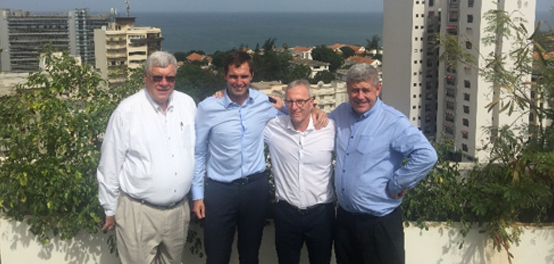
Senegal: The Gateway to Sub-Saharan Africa
West Africa is one of the fastest growing regions in Africa, according to the African Development Bank Group. Factors, including a stock market based in the Ivory Coast, regional growth expected to reach 2.6% in 2017, reduced poverty, and expansive population growth, are clear indicators of economic development.
World Bank claims that specific countries, including Senegal, Côte d’Ivoire, Ethiopia, and Kenya, are progressing even quicker, recording an estimated 5% growth between 2015 and 2017. In fact, Senegal’s physical growth is so rapid that they cannot build infrastructure fast enough to keep up.
Since electing their first president, poet and African socialist Léopold Sédar Senghor, in 1960, Senegal’s society has developed. First focusing on solidifying Senegal an independent republic, Senghor also prioritized the modernization of various industries. He also engrossed himself with the development of relationships with neighboring Africans and Frenchmen and the advancement of what he called “African socialism”, enlightening citizens to make their own decisions about their wellbeing.
From the time Senghor stepped down after two decades of services to today, Senegal has had peaceful transitions of government – correlating to their continued and steady growth. Today, Macky Sall resides as the President of the Republic of Senegal. On his website, Sall shares that his new development model for the country is set to “accelerate progress towards emergence.” Looking forward to 2035, his Plan for an Emerging Senegal (PES) has set the framework for:
- Infrastructure development
- Job creation
- Social inclusion
- Territory utilization
- Urbanization
With over 27 flagship projects as part of the plan, Senegal is going through an economical and physical transformation.
Senegal’s Economical Transformation
To strengthen the business environment, the Senegal government site explains they have been completing various reforms since 2012 that encompass:
- Automated administrative procedures
- Incentives and simplified tax and legal devices
- Production factors’ competitiveness
- High impact investments
Learn more about the economical results on Senegal’s government website.

Touring the newly constructed Blaise Diagne International Airport.
Senegal’s Physical Transformation
With a population nearing 16 million according to the World Population Review (2017), Senegal is working on connecting people in populated cities – like the 2.47 million in Dakar – to those in isolated regions.
Also, part of their PES is the created of an urban hub outside of Dakar that will improve the quality of life for over 300,000 citizens. When finished, the new city of Diamniadio will have a strong infrastructure with all necessary amenities including hotels, shopping centers, schools, police stations, and recreation centers. An additional industrial park in the area will create over 75,000 warehouse and textile and clothing industry jobs.
Check out this rendering of the soon-to-be heart of Diaminadio in Senegal. Watch Video.
Connected to another infrastructure development, the Blaise Diagne International Airport, the region has quickly become the gateway to sub-Saharan Africa. Currently able to carry 3 million passengers to and from Senegal from all around the world, the airport can be expanded to accommodate up to 20 million passengers in the future.
Other infrastructure projects include the development of 599 miles of road and 1.4 miles of bridges, and a high-speed rail system moving 115,000 people daily through 14 stations – all built in 2015.
These features, along with greater regional stability, contribute to Senegal’s ability to grow into local and international players. Commonwealth Funds has visited on several occasions to tour the growing country. The Commonwealth team also met with Eris Property Group, an African development company, and met with local accounting, hospitality and property development firms. Learning more about Senegal, Commonwealth Funds believes the financial sophistication of the country can expand to become available to U.S. investors through equity and debt.